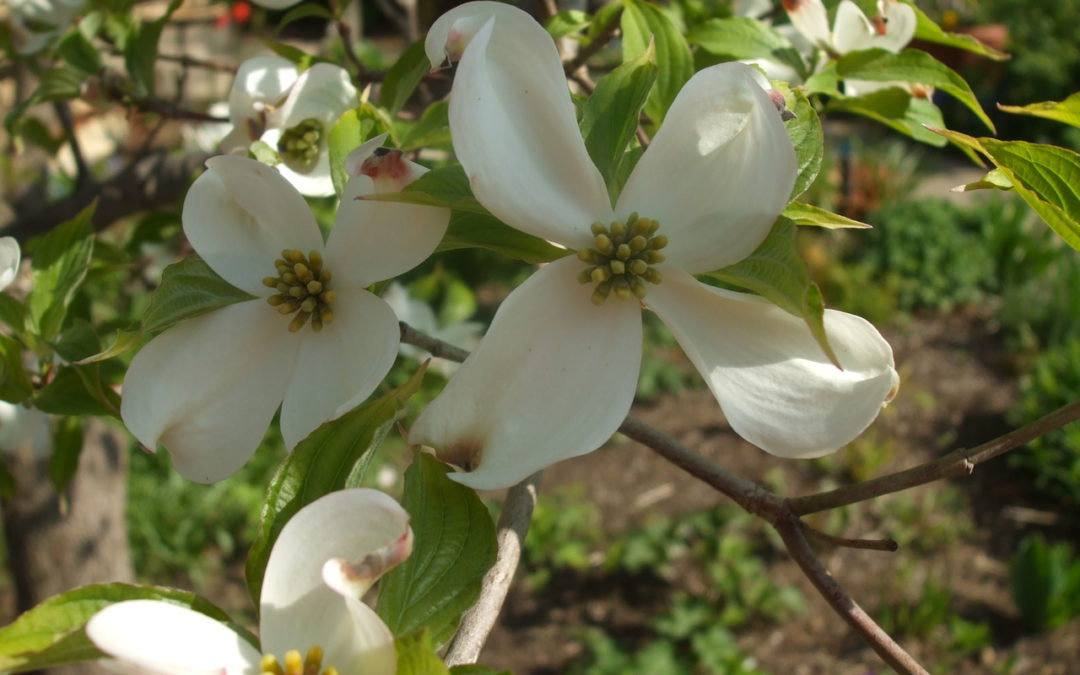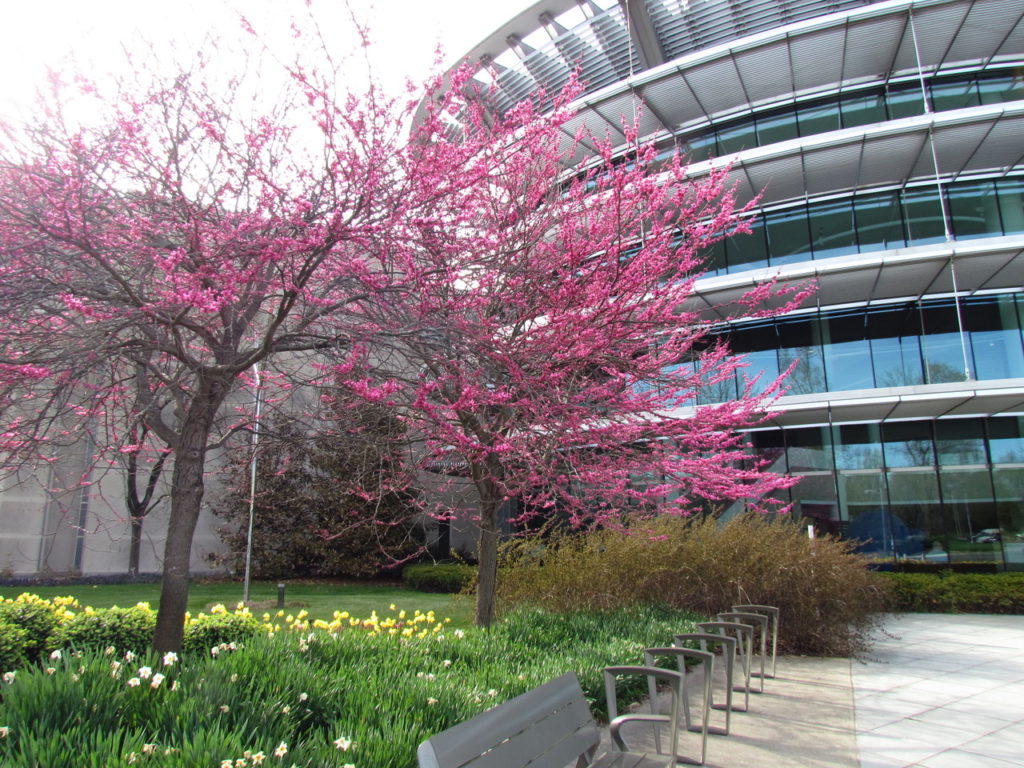
‘Appalachian Red’ native redbud trees call spring visitors to the museum at Newfields.
© Photo Jo Ellen Meyers Sharp
Three beautiful North America native trees command center stage in spring. Each of these can be grown in most Hoosier landscapes to brighten the transition from winter to summer.
Native Serviceberry
We hear all the time about plants with multiple seasons of interest. At the top of the list is serviceberry (Amelanchier spp.), also called shadblow, Juneberry and in the upper Midwest and Canada, downy saskatoon.
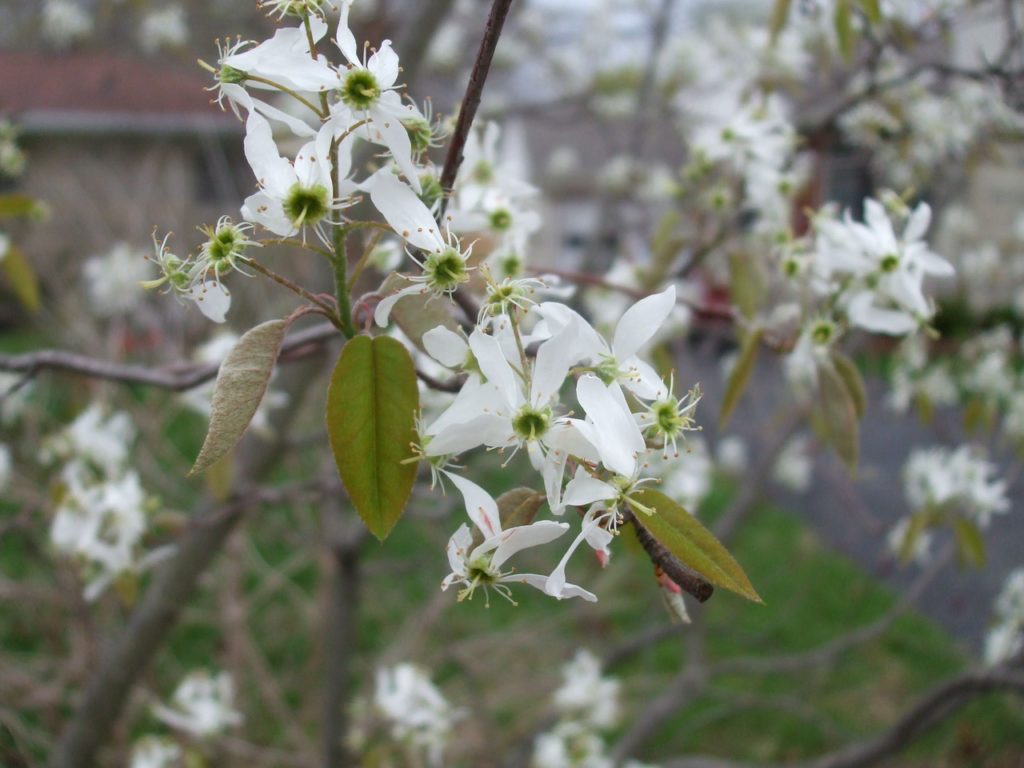
Serviceberry has white flowers in spring, followed by delicious fruit in June. (C) Photo Jo Ellen Meyers Sharp
Some of the common names are tied to nature’s timing: Serviceberry because when it blooms, the soil is usually thawed enough to conduct burial services; shadblow, blooming when the game fish shad spawns; Juneberry because that’s when edible, delicious fruit appears.
Tiny, but showy white flowers appear in late April and early May. Attractive red, blue or purple berries follow. They taste a bit like blueberries, only sweeter. Birds know all about these berries and will take care of harvesting the fruit if you don’t. Although it bears fruit, serviceberry is not a messy tree. In fall, the leaves turn a spectacular orange-red. And in winter, the silvery bark stands out in a landscape.
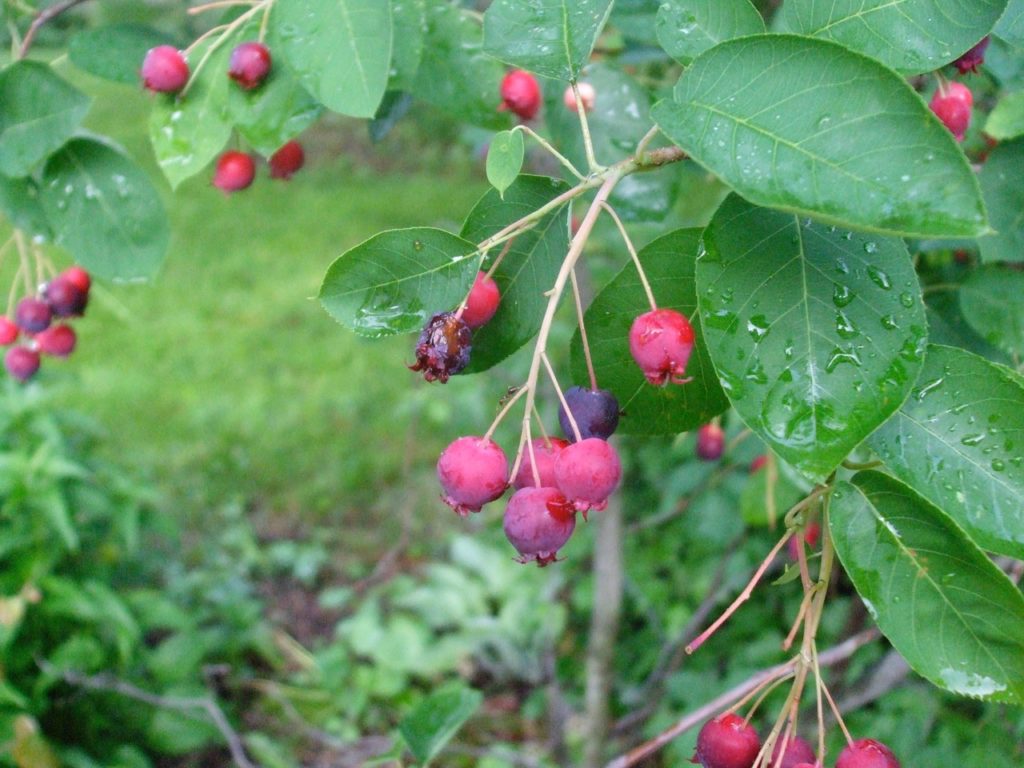
Serviceberry fruit in June is delicious. In fall, the leaves turn orange-red. (C) Photo Jo Ellen Meyers Sharp
Serviceberry can be a single-trunk tree or a multi-stem tree. Grow it in full sun to part shade. Most varieties get 20 to 25 feet tall and 15 to 20 feet wide.
Native Redbud
In full glory right now, redbuds (Cercis spp.) have the unusual habit of sprouting flowers right along their branches.
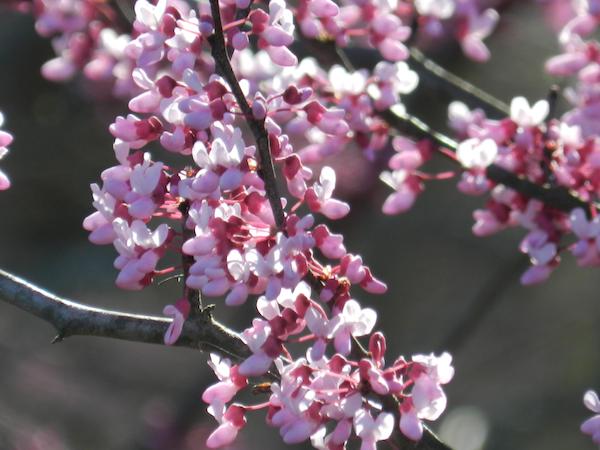
Native redbuds bloom along their branches. (C) Photo PippaLou/Morguefile.com
Heart-shaped leaves emerge soon after the tree blooms. Depending on the variety, leaves may be green, gold or have purple undersides. There also are white flowering redbuds (C. alba), some of which can be found on the Indiana University campus in Bloomington.
The slender seedpods that form after the tree blooms reveal redbud’s relationship to the pea family. The tree’s mature size is about 15 to 20 feet tall and wide. A fast growing tree, grow redbud in full sun or part shade.
To get an idea of the different types of redbuds, consider visiting Newfields, formerly the Indianapolis Museum or Art, which has more than 30 varieties or species planted on its campus.
Native Flowering Dogwood
May is the month of flowering dogwood (Cornus florida), a beautiful, graceful tree that adds multiple seasons of beauty in the landscape.
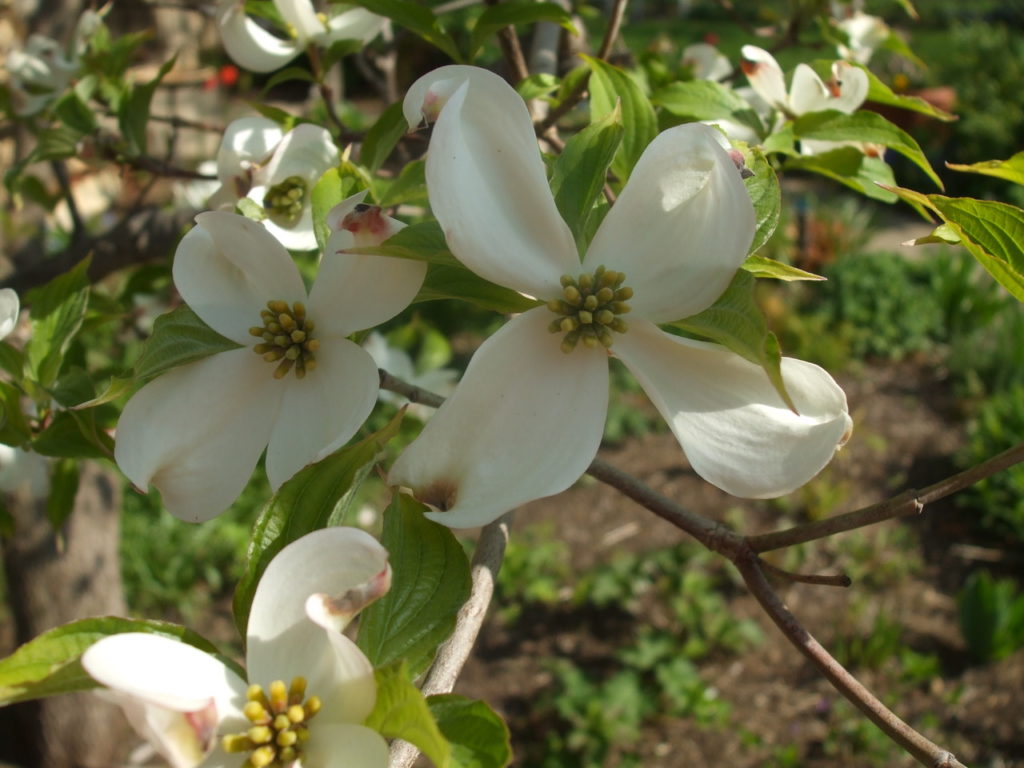
Native dogwoods bloom in spring. (C) Photo Jo Ellen Meyers Sharp
First off, are the large, creamy white flowers, technically called bracts, with centers that look like they are made up of tiny beads. Those tiny beads turn into green then red berries to adorn the tree through summer. Robins, cedar waxwings and squirrels like the fruit as it ripens. Although it has fruit, flowering dogwood is not a messy tree.
In fall, the leaves turn wine red and stay on the tree for several weeks. Once they fall, small, onion-like domes remain on the branches. These domes enclose the flowers for next spring.
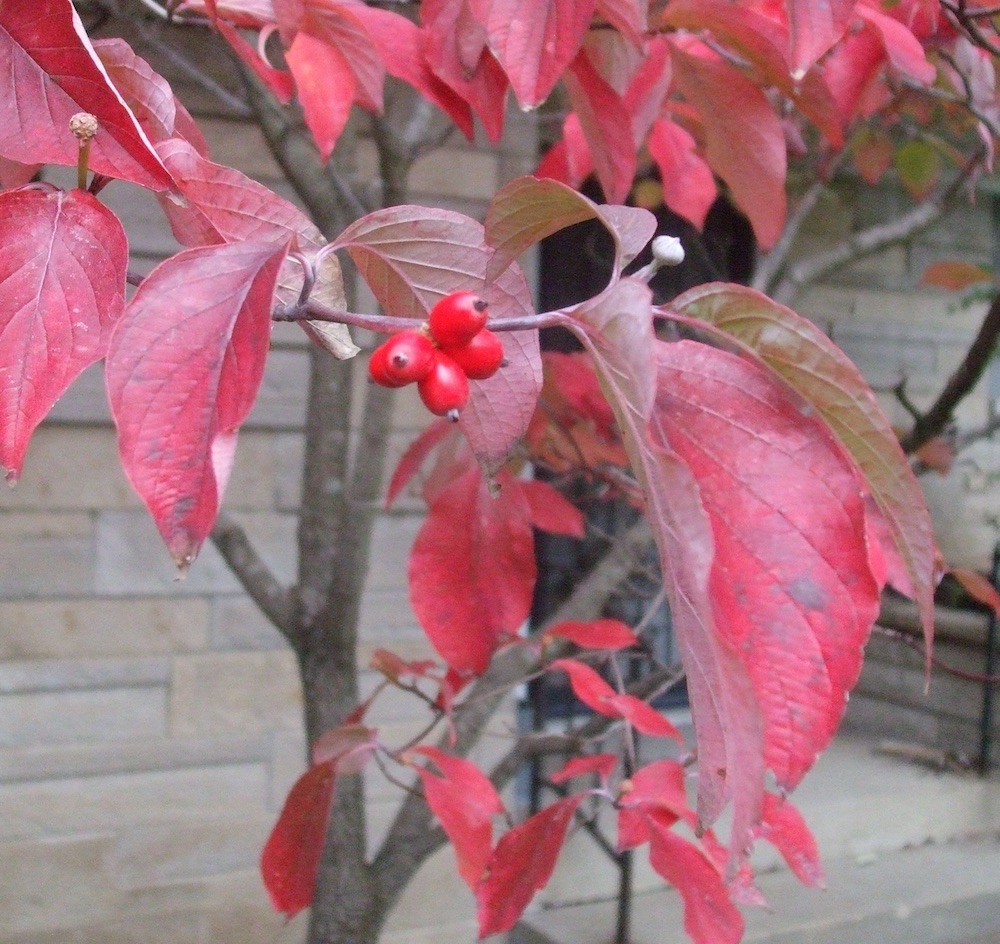
In fall, the leaves of native flowering dogwoods turn wine red. Red berries also form, something birds like to eat. And, the little domes take shape to enclose next spring blooms. (C) Photo Jo Ellen Meyers Sharp
Dogwoods are an understory trees. In natural areas, they grow under the canopy of larger trees or in the shafts of light in slightly open areas or along the fringes of woods. Grow flowering dogwood in part sun to part shade. It will get 15 to 30 feet tall and wide.
Holeman experts can help you decide which flowering native tree would be best in your landscape.

